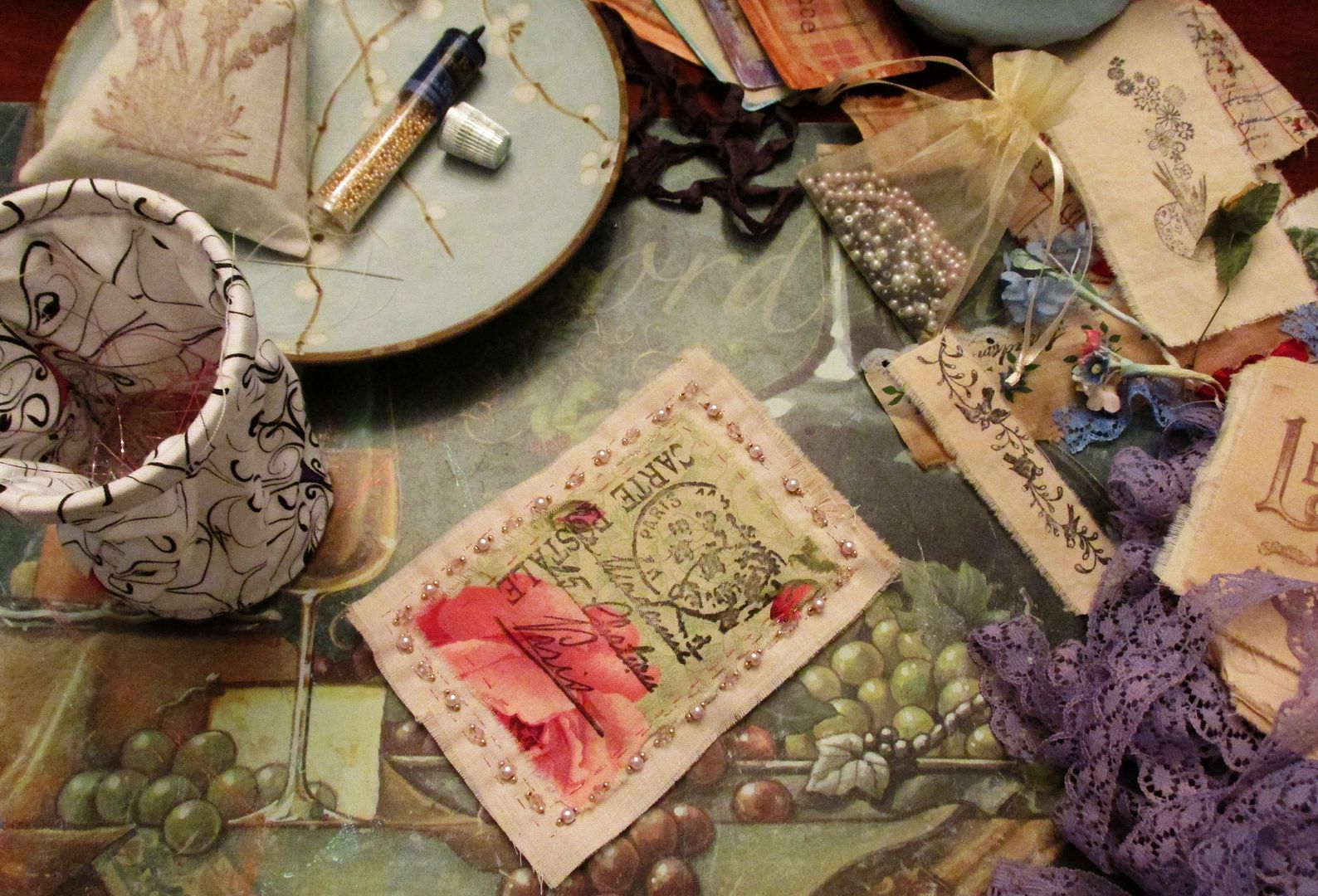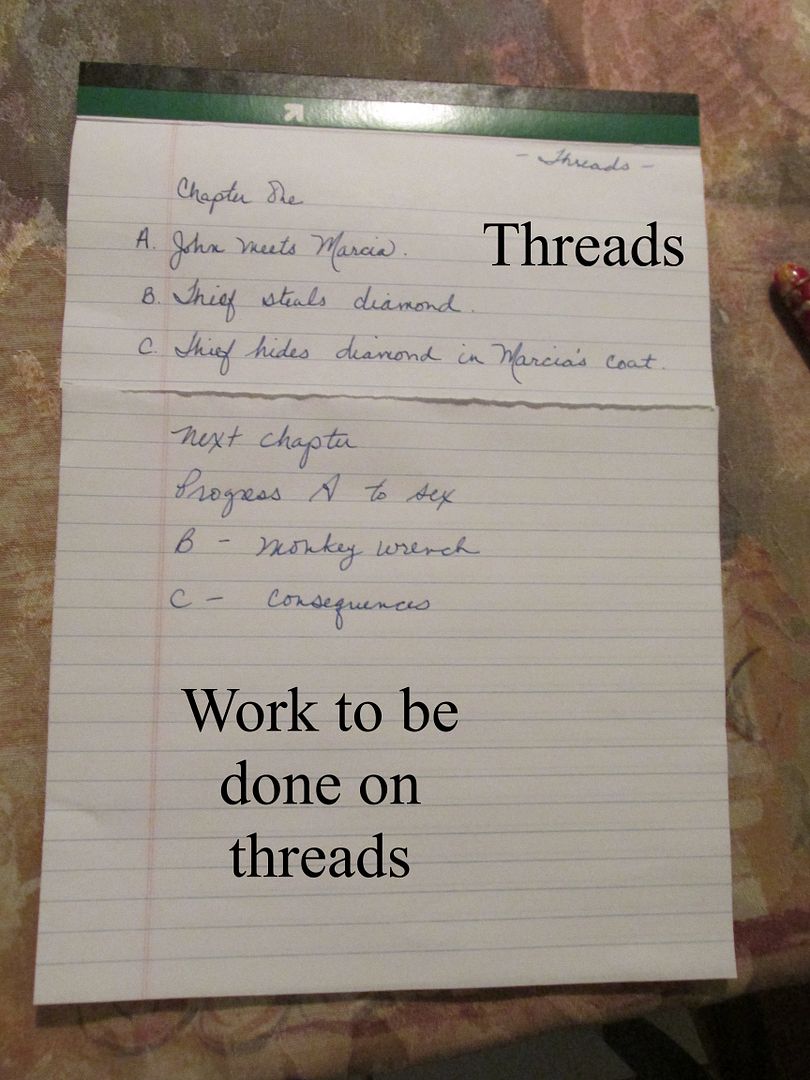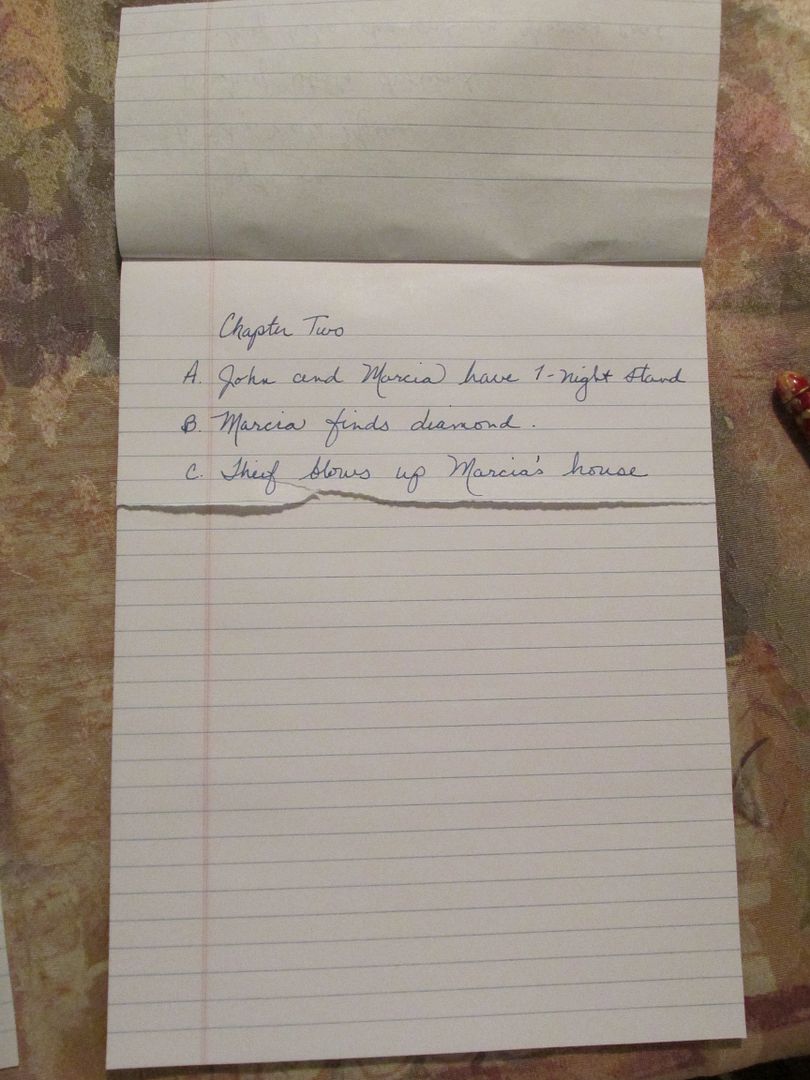 Last week I finally started on my annual Spring project of making sachets for our drawers and closets. One nifty little helpful widget I picked up at this year's county quilt show is a thread catcher, which you can see there in the photo on the left (the white and black cup-like thing.) When you sew you are forever snipping threads, and having a little bin in which to deposit them prevents them from clinging to you, your project, your hair, your pincushion, your fabric, your rug, your sewing machine, being sewn back into your project, etc. The neat thing about this widget is that when I'm finished I can empty it and collapse it into the size of a Ring Ding, which also makes it very portable. It was so cool I bought a second one for a friend.
Last week I finally started on my annual Spring project of making sachets for our drawers and closets. One nifty little helpful widget I picked up at this year's county quilt show is a thread catcher, which you can see there in the photo on the left (the white and black cup-like thing.) When you sew you are forever snipping threads, and having a little bin in which to deposit them prevents them from clinging to you, your project, your hair, your pincushion, your fabric, your rug, your sewing machine, being sewn back into your project, etc. The neat thing about this widget is that when I'm finished I can empty it and collapse it into the size of a Ring Ding, which also makes it very portable. It was so cool I bought a second one for a friend.Would that we had such handy widgets for catching our story threads. Writers use everything from index cards and Post-It notes to whiteboards and outline trees to keep our threads mapped out, organized and contained, and still we drop them, lose them, forget about them and/or wake up at 2 a.m. in a panic after we send off the last round of revisions to our editor because we forgot about that thread we left dangling unfinished in chapter seventeen (I'm still really sorry about that, Adam.)
If you're into software solutions, excellent novel organizer services like Hiveword can help you keep track of your story threads (and it's still free, and there's nothing to download; you work online with it.) But let's say you want a low-tech solution that is simple and easy to update while you're working offline on your story -- this is why I invented PBW's Story Thread Catcher:

Okay, I know, it's just a blank writing pad. But you're going to turn it into a story thread catcher -- like this:

At the top of your writing pad, write Chapter One/Scene One or however you want to divvy up the work, and write a short line on each of the threads you start in this section (if you're a plotter, you can do this before you write the chapter; if you're a pantser, do this after you write the chapter.) This is your thread catcher section. Now on the bottom half of the page, make notes about any work you need to do on the threads in the next chapter (pantsers, if you want you can just write lalalala on this part.)
Tear off the bottom section of the page and remember to review it before or after you write the next chapter so you do or have done the thread work necessary. The work you do on the threads then becomes the entries for the top catcher section of the next page. Then all you do is repeat the process for each chapter. As you progress with your story, you will build up a flippable series of tops with your thread notes, so that's the catcher part:

See how simple? If you need to look back at a particular thread and how it went, all you have to do is flip through the top part. Keeping track of the threads is as simple as lettering or numbering them in sequence (and yes, you can add more threads as you go along, just remember to keep adding them to and tracking them on your subsequent thread notes.) When you finish your story, all you have to do is make sure you wrapped up each thread, and you do that by reading through your catcher section.
You're welcome.

Hmmm... I might try this. Minimal writing and much smaller than the story boards I end up erasing accidentally.
ReplyDeleteBTW. I miss John and Marcia.
I miss them too. I think they're off somewhere in the filing cabinet having transdimensional wild monkey sex (using all the wrong words for it, naturally.)
DeleteLow tech, old school & very effective - I like it. I'm curious, Lynn, how is Picasso coming along?
ReplyDeleteThanks, Fran. I actually finished Picasso last week and decided to send it to someone who has been working like crazy and deserved a nice surprise (long story; I'll have more about it in a post scheduled for next week.) Here's a pic of the finished piece: http://i259.photobucket.com/albums/hh289/LynnViehl/Paperback%20Writer%20VII/PicassoFinished_zps85414ea6.jpg
DeleteWow that is totally a work of art, lovely finished piece. I'm so jealous of your friend. You know, I really didn't like the picture in the beginning and couldn't understand why you did but now I can see it. Amazing.
Delete